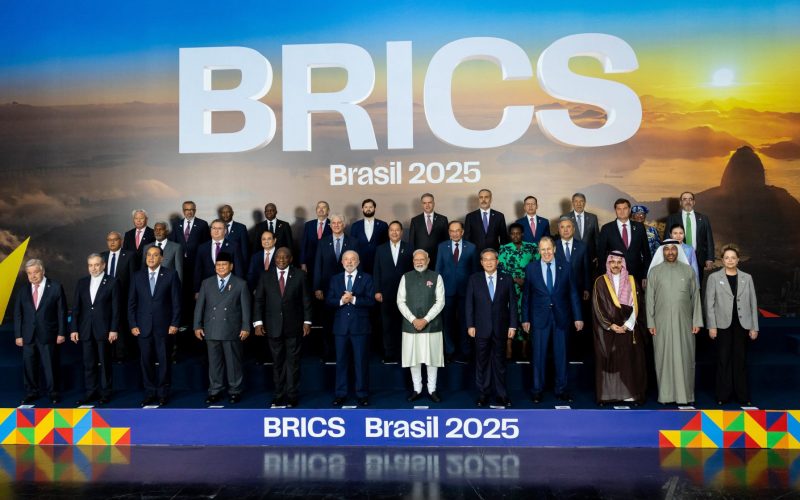This follows on the Extraordinary Summit held in Zimbabwe in April 2015, at which point the Summit adopted the Industrialisation Strategy and Roadmap (ISR). The strategy remains more a vision document than a detailed action plan, and lacks specific proposals on how to achieve the broad goals the document sets out. The topic for this coming week’s meeting is ‘Accelerating Industrialisation of SADC Economies Through Transformation of Natural Endowment and Improved Human Capital’, which is a progression of the theme of economic transformation and sustainable development through beneficiation and value-addition, as discussed in April.
With Summits consistently focusing on the industrialisation theme, it is becoming clear that there has been a overt shift in focus away from the trade integration timetable – where the SADC Free Trade Area (FTA) is supposed to be developed into a Customs Union and later into a Common Market – towards a a focus on the fundamentals required for economic growth via a region-wide industrialisation policy.
This is, in fact, an interesting shift back to historical roots as SADC’s predecessor, the Southern African Development Coordination Conference (SADCC) deliberately avoided trade and market integration in favour of industrialisation and development. The focus on trade and market integration was an agenda adopted in the 1990s but never fully embraced by member states, as evidenced by the lack of progress in implementation. The question arises whether the ISR can be successful in delivering region-wide economic development if prior attempts by the SADCC and the SADC trade integration agenda have failed thus far.
Clearly SADC foundational factors play a big part in how successful such a policy can be. Most of the member states have, or have had national industrial policies or policies that promote economic development. However, few policies reflect the recognition that the SADC region can play an important role in its development via regional value-chains or beneficiation. It would be important to align national policies with those of the region, but domestication of regional policies has always been problematic in SADC while countries are often competing with one another for investment and markets.
An indicator that the industrial policy framework will be difficult to implement also lies in the Southern African Customs Union (SACU) experience. The customs union resulted in economic polarisation and price raising effects. Four of the five members of the customs union have been struggling for years to counteract the imbalance caused by South Africa’s economic strength vis-à-vis the other states. These states have fundamental differences in approach to industrialisation of the region. The problems seem likely to be aggravated at the SADC level due to South Africa’s political and economic dominance and difficulties in sharing the benefits of industrialisation with neighbouring states.
What can be done differently? In the first instance it is critical to recognise the role and incorporate the voice and insight of the private sector active in the region that see benefit in an integrated region. The private sector voice has recently been revived through the Southern African Business Forum and if the recent meeting that took place in Botswana from 10-12 August is anything to go by, there is definite interest from the private sector to accelerate effective integration.
The Industrial Development section of the ISR contains few true recommendations, limited as it is by the extreme diversity of SADC member states and their respective industrial policies. While this is a serious challenge to regional policy towards industrial development, some initiatives are nevertheless possible. Examples could include:
- Create linkages between Special Economic Zones: SEZs have proliferated across the region and hold great potential to drive industrialisation, but have had extremely mixed fortunes, with many failing to get off the ground. Developing relationships between the management of various SEZs can help encourage firms located in successful SEZs to consider investment in underperforming SEZs. Some level of harmonisation in the process of firms entering SEZs might further smooth this process. Successful SEZs should be seen as a Gateway to the broader SEZ network in the SADC region.
- Managing spillovers from economies of scale: Industrial policy benefits from scale, with governments of richer states being better able to offer large incentives to potential investors. Large industrial policy programmes in countries like South African can distort development and investment patterns in the region. While this problem is very difficult to resolve, an active dialogue on the issue should be ongoing to assure industrial policy does not become a beggar-thy-neighbour policy.
- Deepening trade integration may increase scope for regional industrial policy: The experience of SACU is relevant here, where the presence of a common external tariff enabled the regionalisation of South Africa’s Motor Industry Development Programme. While the use of trade barriers in industrial policy is controversial, it remains common in the region, and greater co-ordination can expand the benefits on offer while reducing distortions.
- Regionalising local content requirements: Local content requirements are another controversial but common policy used in the region. Most define local content in terms of the country itself, but shifting thinking on ‘local’ as meaning ‘regional’ could broaden the benefits of this policy, and assist in developing regional value chains for the goods in question.
Natural resources are a vital part of the SADC economy, and developing beneficiation plans has great potential to drive job creation, and create spillover benefits via industrial inputs. However, it is not clear that having large stockpiles of natural resources is enough to create a natural competitive edge in beneficiation. A national abundance of resources does not have a major impact on the cost of commodities that generally see their prices set on the global market. In a sense, SADC’s abundant natural resources do not belong to SADC, they belong to the market. While the ISR sets out a good plan to develop a beneficiation sector, this sector will still face stiff competition from entrenched rivals that benefit from economies of scale and experience. A successful beneficiation programme should attempt to find creative ways to use the physical presence of natural resources to depress the price of these input costs, such as offering fiscal incentives for mining firms to offer supply contracts at preferential rates. Other policy options, such as the use of export taxes, involve very large economic and political risks, but may be an avenue some states consider.
The prioritisation of movement up the value chain is essential to many African countries. Regional value chains (RVCs) are excellent vehicles to drive entry into global value chains (GVCs). However, given huge regional disparities in productive capacity, it seems most likely that SADC RVCs will be structured as smaller states providing inputs to hub economies like South Africa, which will then sell into GVCs. In the short- to medium-term, this is amongst the best strategies to gain access to competitive global markets. However, moving up the value chain will require additional work on the part of smaller economies.
- For example, if supplier countries moved up the value chain and the hub moves up also, then this has a positive qualitative impact on industry in the region.
- On the other hand, if hub economies do not share the benefits of their access to global value chains with the smaller economies in the region, they might displace those lower down the chain and deepen the region’s already severe economic polarisation.
- If RVCs are to be used to the best of their potential, as a vehicle to enter GVCs, then regional integration and collaboration has to be deep and meaningful.









